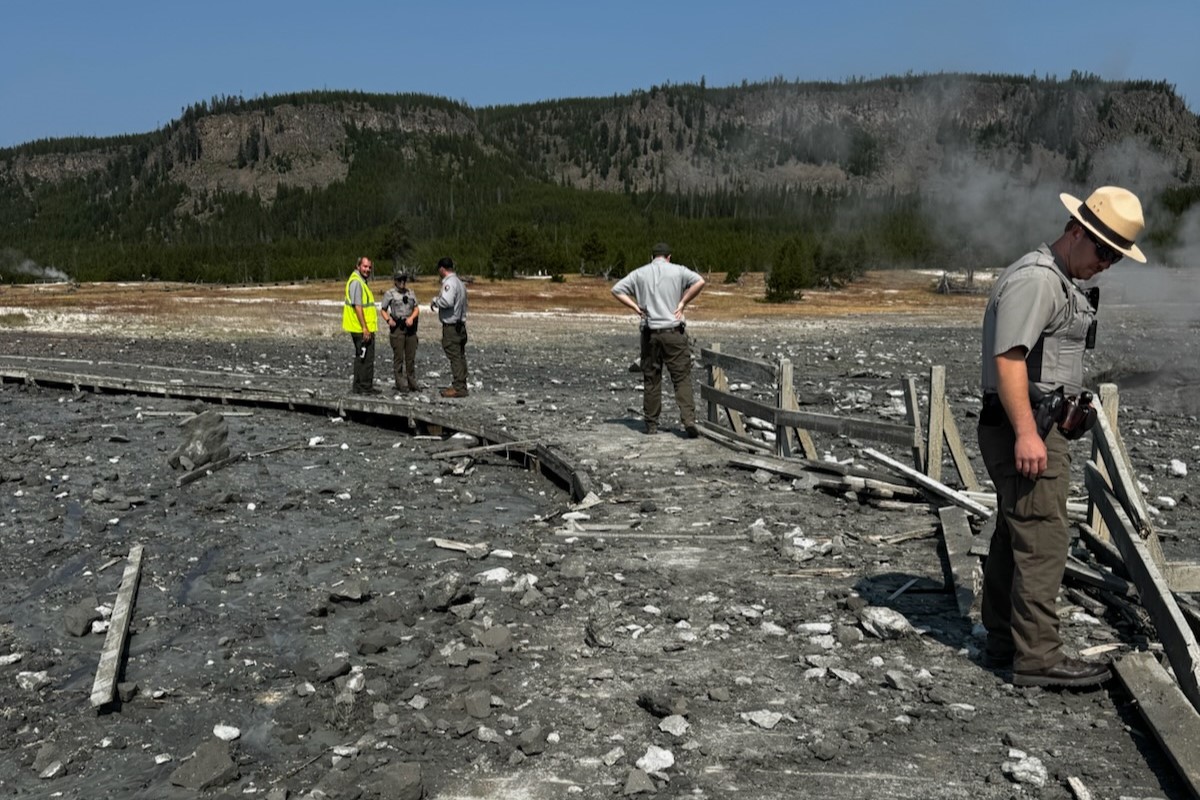
A hydrothermal explosion rocked Yellowstone National Park today, destroying an observation area at Biscuit Basin. According to the National Park Service (NPS) , at 10:19 am today, July 23, a localized hydrothermal explosion occurred near the Sapphire Pool in Biscuit Basin, located just north of Old Faithful. While the observation boardwalks were destroyed by the blast, no injuries were reported.
According to USGS, no other monitoring data shows changes in the Yellowstone region. “Today’s explosion does not reflect a change in the volcanic system, which remains at normal background levels of activity,” said NPS in a news release.

USGS says that hydrothermal explosions occur when water suddenly flashes to steam underground, and they are relatively common in Yellowstone. As an example, Porkchop Geyser, in Norris Geyser Basin, experienced an explosion in 1989, and a small event in Norris Geyser Basin was recorded by monitoring equipment on April 15, 2024. An explosion similar to that of today also occurred in Biscuit Basin on May 17, 2009.
Hydrothermal explosions are violent and dramatic events resulting in the rapid ejection of boiling water, steam, mud, and rock fragments. The explosions can reach heights of 1.2 miles and leave craters that are from tens of feet up to more than 1.2 miles in diameter. Ejected material, mostly breccia, angular rocks cemented by clay, can be found far as 1.8 to 2.5 miles from the largest craters.
USGS says that hydrothermal explosions occur where shallow interconnected reservoirs of fluids with temperatures at or near the boiling point underlie thermal fields. “These fluids can rapidly transition to steam if the pressure suddenly drops. Since vapor molecules take up much more space than liquid molecules, the transition to steam results in significant expansion and blows apart surrounding rocks and ejects debris. Hydrothermal explosions are a potentially significant local hazard and can damage or even destroy thermal features,” wrote USGS in describing the phenomena.
Dramatic video of today’s hydrothermal explosion at Yellowstone Park: https://t.co/mlw6VJxnVF
— the Weatherboy (@theWeatherboy) July 23, 2024

USGS says that today’s explosion does not reflect activity within volcanic system, which remains at normal background levels of activity. “Hydrothermal explosions like that of today are not a sign of impending volcanic eruptions, and they are not caused by magma rising towards the surface,” USGS said in a statement.
The Yellowstone Volcano Observatory (YVO) provides long-term monitoring of volcanic and earthquake activity in the Yellowstone National Park region. Yellowstone is the site of the largest and most diverse collection of natural thermal features in the world and the first National Park. YVO is one of the five USGS Volcano Observatories that monitor volcanoes within the United States for science and public safety.
YVO Member agencies include USGS, Yellowstone National Park, University of Utah, University of Wyoming, Montana State University, UNAVCO, Inc., Wyoming State Geological Survey, Montana Bureau of Mines and Geology, Idaho Geological Survey